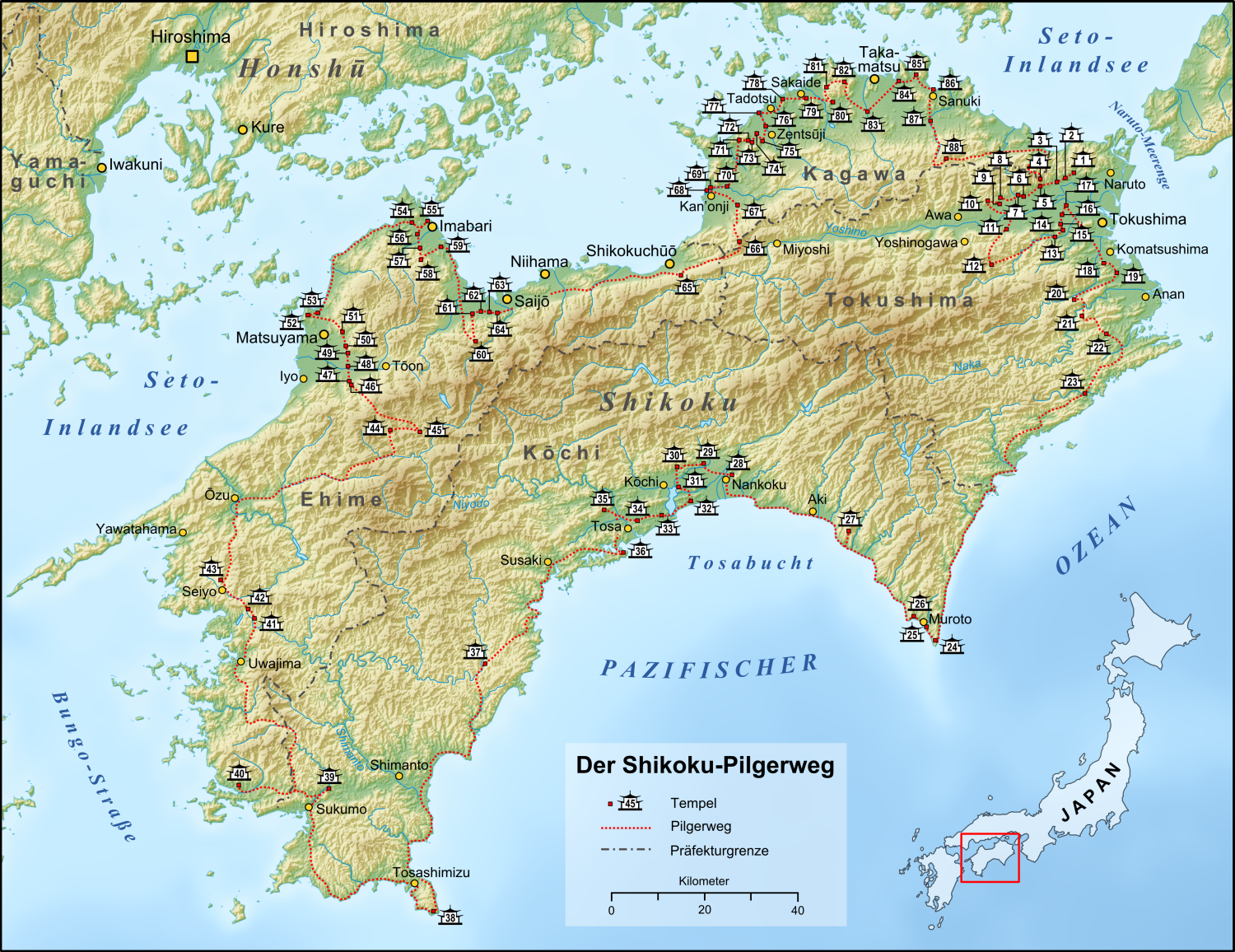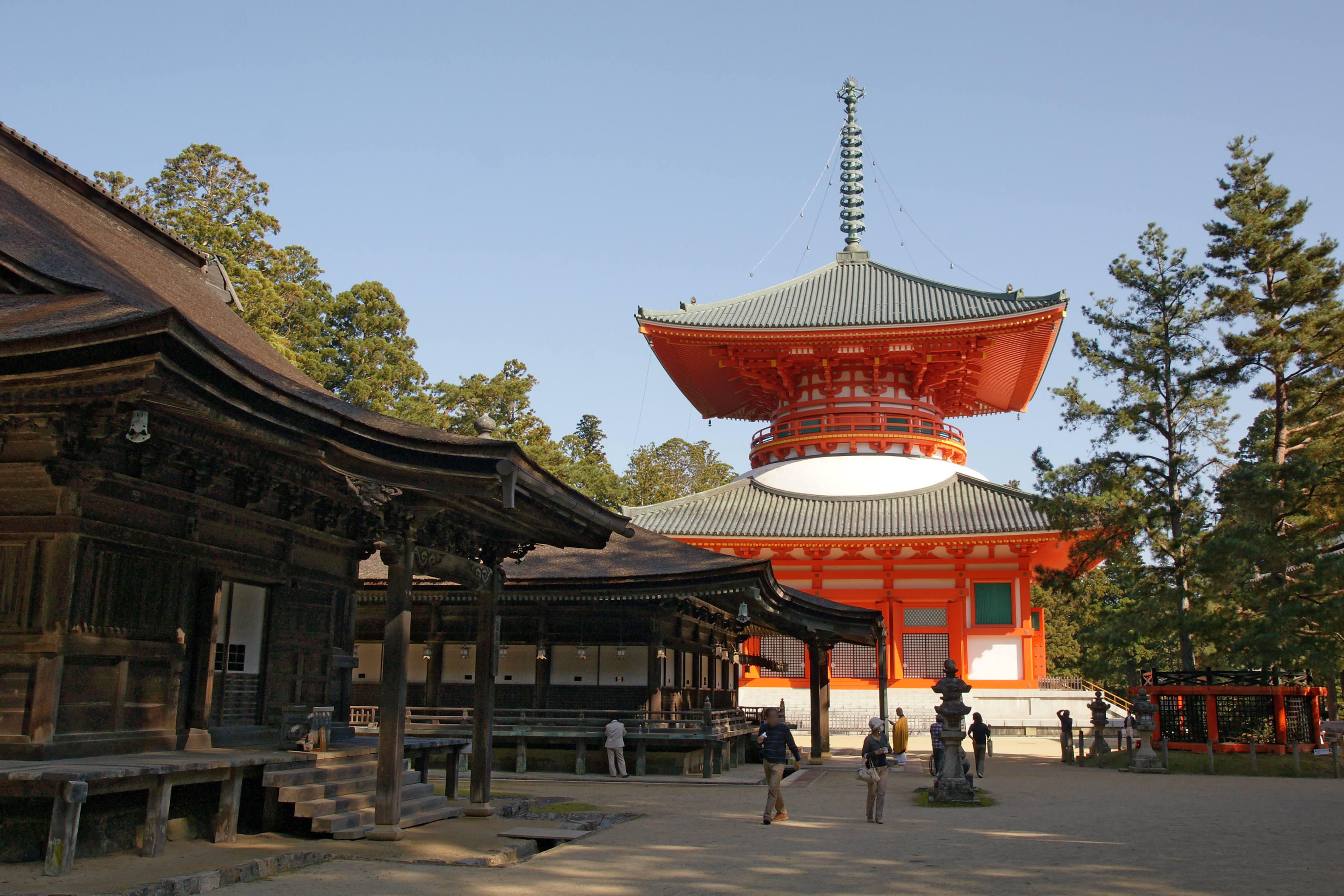|
Kōnomine-ji
Kōnomine-ji is a Shingon Buddhist Temple located in Yasuda, Kōchi, Japan. It is the 27th temple of the Shikoku Pilgrimage. References [...More Info...] [...Related Items...] OR: [Wikipedia] [Google] [Baidu] |
Shikoku Pilgrimage
The or is a multi-site pilgrimage of 88 temples associated with the Buddhist monk Kūkai (''Kōbō Daishi'') on the island of Shikoku, Japan. A popular and distinctive feature of the island's cultural landscape, and with a long history, large numbers of pilgrims, known as , still undertake the journey for a variety of ascetic, pious, and tourism-related purposes. The pilgrimage is traditionally completed on foot, but modern pilgrims use cars, taxis, buses, bicycles, or motorcycles, and often augment their travels with public transportation. The standard walking course is approximately long and can take anywhere from 30 to 60 days to complete. In addition to the 88 "official" temples of the pilgrimage, there are 20 ''bekkaku'' (別格) temples, which are officially associated with the Shikoku Pilgrimage (and hundreds more ''bangai'' (番外) temples, simply meaning "outside the numbers," which are not considered part of the official 88). To complete the pilgrimage, i ... [...More Info...] [...Related Items...] OR: [Wikipedia] [Google] [Baidu] |
Yasuda, Kōchi
270px, traditional buildings in Yasuda 270px, Kōnomine Jinja autumn festival is a town located in Aki District, Kōchi Prefecture, Japan. , the town had an estimated population of 2,455 in 1244 households and a population density of 47 persons per km².The total area of the town is . Geography Yasuda is located in southeastern Kōchi Prefecture on the island of Shikoku. The town area is generally along the valley in the middle and lower reaches of the Yasuda River, and extends back to Umaji Village. It faces Tosa Bay in the south. Forests occupy about 80% of the town. Neighbouring municipalities Kōchi Prefecture * Aki * Tano * Kitagawa * Umaji Climate Yasuda has a Humid subtropical climate (Köppen ''Cfa'') characterized by warm summers and cool winters with light snowfall. Demographics Per Japanese census data, the population of Yasuda has been decreased steadily since the 1960s. History As with all of Kōchi Prefecture, the area of Yasuda was part of a ... [...More Info...] [...Related Items...] OR: [Wikipedia] [Google] [Baidu] |
Kōchi Prefecture
is a prefecture of Japan located on the island of Shikoku. Kōchi Prefecture has a population of 757,914 (1 December 2011) and has a geographic area of 7,103 km2 (2,742 sq mi). Kōchi Prefecture borders Ehime Prefecture to the northwest and Tokushima Prefecture to the northeast. Kōchi is the capital and largest city of Kōchi Prefecture, with other major cities including Nankoku, Shimanto, and Kōnan. Kōchi Prefecture is located on Japan's Pacific coast surrounding a large bay in the south of Shikoku, with the southernmost point of the island located at Cape Ashizuri in Tosashimizu. Kōchi Prefecture is home to Kōchi Castle, considered the most intact Japanese castle, and the Shimanto River, one of the few undammed rivers in Japan. History Kōchi Prefecture was historically known as Tosa Province and was controlled by the Chōsokabe clan in the Sengoku period and the Yamauchi clan during the Edo period. Kōchi city is also the birthplace of noted revolution ... [...More Info...] [...Related Items...] OR: [Wikipedia] [Google] [Baidu] |
Shingon
Shingon monks at Mount Koya is one of the major schools of Buddhism in Japan and one of the few surviving Vajrayana lineages in East Asia, originally spread from India to China through traveling monks such as Vajrabodhi and Amoghavajra. Known in Chinese as the Tangmi (; the Esoteric School in Tang Dynasty of China), these esoteric teachings would later flourish in Japan under the auspices of a Buddhist monk named Kūkai (), who traveled to Tang China to acquire and request transmission of the esoteric teachings. For that reason, it is often called Japanese Esoteric Buddhism, or Orthodox Esoteric Buddhism. The word ''shingon'' is the Japanese reading of the Chinese word ('), which is the translation of the Sanskrit word ("mantra"). History Shingon Buddhist doctrine and teachings arose during the Heian period (794-1185) after a Buddhist monk named Kūkai traveled to China in 804 to study Esoteric Buddhist practices in the city of Xi'an (), then called Chang-an, at A ... [...More Info...] [...Related Items...] OR: [Wikipedia] [Google] [Baidu] |
Japan
Japan ( ja, 日本, or , and formally , ''Nihonkoku'') is an island country in East Asia. It is situated in the northwest Pacific Ocean, and is bordered on the west by the Sea of Japan, while extending from the Sea of Okhotsk in the north toward the East China Sea, Philippine Sea, and Taiwan in the south. Japan is a part of the Ring of Fire, and spans an archipelago of 6852 islands covering ; the five main islands are Hokkaido, Honshu (the "mainland"), Shikoku, Kyushu, and Okinawa. Tokyo is the nation's capital and largest city, followed by Yokohama, Osaka, Nagoya, Sapporo, Fukuoka, Kobe, and Kyoto. Japan is the eleventh most populous country in the world, as well as one of the most densely populated and urbanized. About three-fourths of the country's terrain is mountainous, concentrating its population of 123.2 million on narrow coastal plains. Japan is divided into 47 administrative prefectures and eight traditional regions. The Greater Tokyo Ar ... [...More Info...] [...Related Items...] OR: [Wikipedia] [Google] [Baidu] |
Buddhist Pilgrimage Sites In Japan
Buddhism ( , ), also known as Buddha Dharma and Dharmavinaya (), is an Indian religion or philosophical tradition based on teachings attributed to the Buddha. It originated in northern India as a -movement in the 5th century BCE, and gradually spread throughout much of Asia via the Silk Road. It is the world's fourth-largest religion, with over 520 million followers (Buddhists) who comprise seven percent of the global population. The Buddha taught the Middle Way, a path of spiritual development that avoids both extreme asceticism and hedonism. It aims at liberation from clinging and craving to things which are impermanent (), incapable of satisfying ('), and without a lasting essence (), ending the cycle of death and rebirth (). A summary of this path is expressed in the Noble Eightfold Path, a training of the mind with observance of Buddhist ethics and meditation. Other widely observed practices include: monasticism; " taking refuge" in the Buddha, the , and the ; ... [...More Info...] [...Related Items...] OR: [Wikipedia] [Google] [Baidu] |
Buddhist Temples In Kōchi Prefecture
Buddhism ( , ), also known as Buddha Dharma and Dharmavinaya (), is an Indian religion or philosophical tradition based on teachings attributed to the Buddha. It originated in northern India as a -movement in the 5th century BCE, and gradually spread throughout much of Asia via the Silk Road. It is the world's fourth-largest religion, with over 520 million followers (Buddhists) who comprise seven percent of the global population. The Buddha taught the Middle Way, a path of spiritual development that avoids both extreme asceticism and hedonism. It aims at liberation from clinging and craving to things which are impermanent (), incapable of satisfying ('), and without a lasting essence (), ending the cycle of death and rebirth (). A summary of this path is expressed in the Noble Eightfold Path, a training of the mind with observance of Buddhist ethics and meditation. Other widely observed practices include: monasticism; "taking refuge" in the Buddha, the , and the ; and ... [...More Info...] [...Related Items...] OR: [Wikipedia] [Google] [Baidu] |

